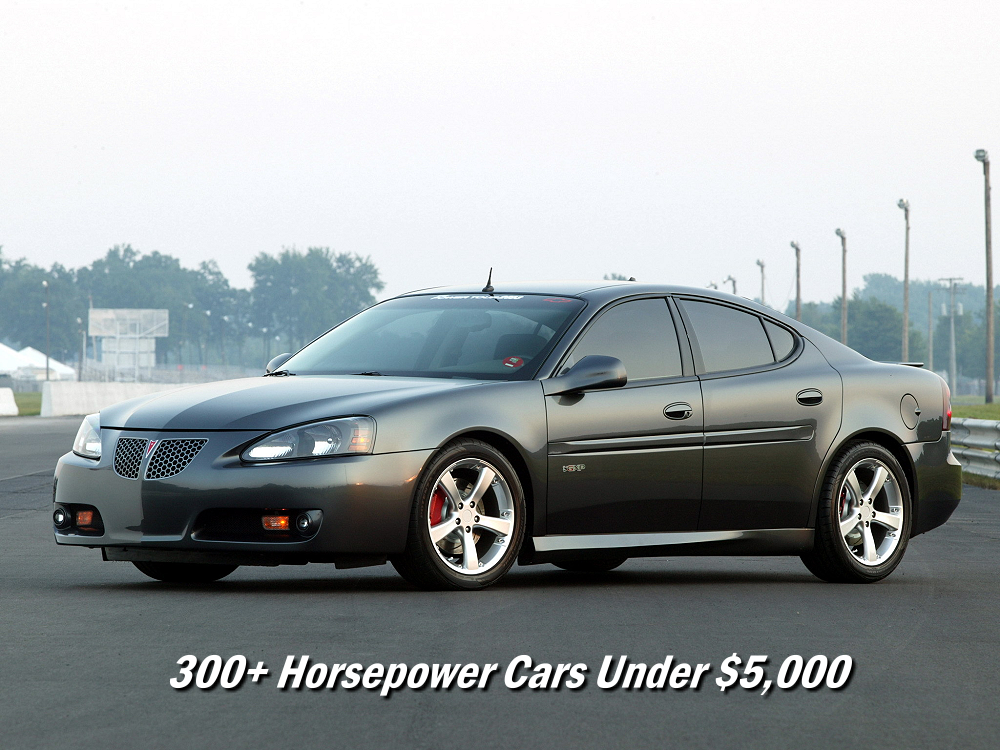
Looking to buy a car and only have $5,000 to spend? Just because you’re buying a car on a budget doesn’t mean it has to be slow and lame. Here’s a list of coupes and sedans that make at least 300 horsepower and even have some style!
2005-2010 BMW E60 550i
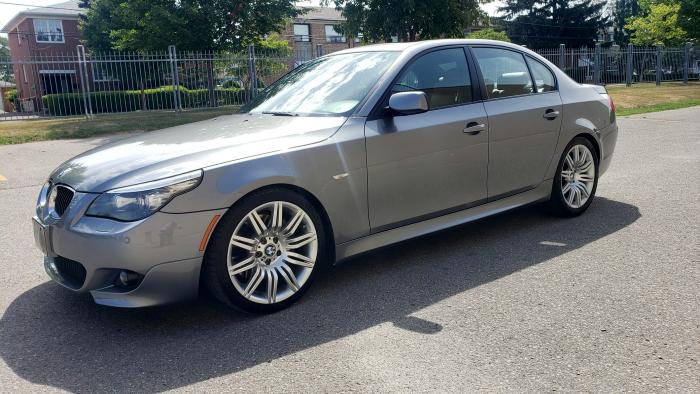
The 2005-2010 BMW 550i is powered by a 4.8L N62 V8 that produces 362 hp and is backed by either a 6-speed manual or 6-speed automatic transmission.
2006-2012 BMW 335i

The 2006-2012 BMW 335i is powered by a twin turbo 3.0L straight 6 which produces 306 hp. The 335i was the first 3 Series model produced with a turbocharged gas engine. It was also the first 3 Series to include the iDrive operating system, which consists of navigation, infotainment and essential vehicle functions.
1998-2002 Chevy Camaro Z28
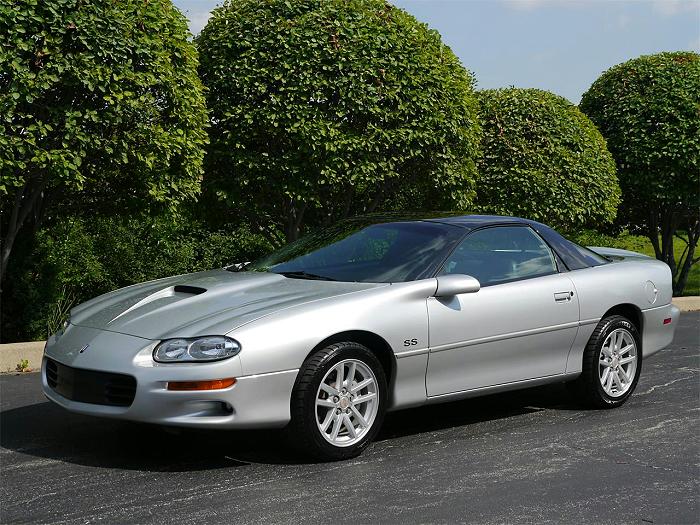
The 1998-2002 Chevy Camaro Z28 comes with a 5.7L LS1 all-aluminum engine rated at 305 hp. The SS versions (1998-2002) received slightly improved exhaust and intake systems, bigger wheels and tires, a slightly revised suspension for improved handling and grip while retaining ride comfort, an arc-shaped rear wing for downforce, and different gearing ratios for faster acceleration, over the Z28 models. Chevrolet offered a 35th-anniversary edition for the 2002 model year.
The 1998-2002 Chevy Camaro B4C Police package Camaro will have the same 305 hp engine.
2006-2007 Chevy Monte Carlo SS
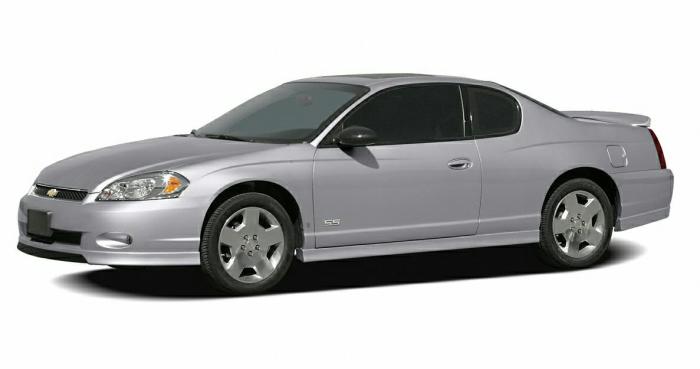
The 2006-2007 Chevy Monte Carlo SS used the Generation IV small-block V8 — the first V8 since 1988. The 5.3 L V8 produced 303 hp. Only 14,829 SS models were produced over the two years, 8,794 in 2006 and 6,035 in 2007. The SS models
2005-2010 Ford Mustang GT / 2011-2014 Ford Mustang
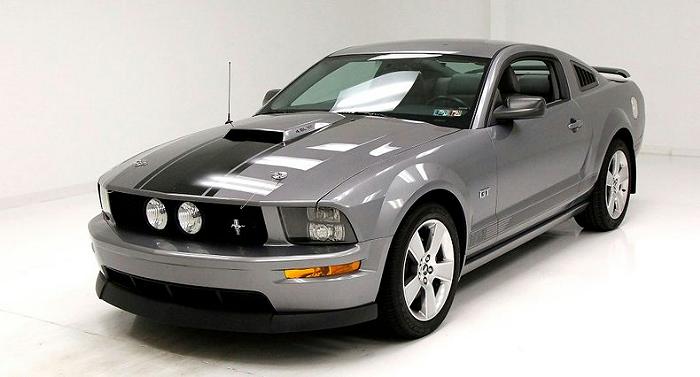
For the 2005 to 2010 production years, the Ford Mustang GT used an aluminum block 4.6L SOHC three-valve Modular V8 with variable camshaft timing (VCT) that produced 300 hp and either a 5R55S five-speed automatic transmission or a Tremec TR-3650 five-speed manual.
From 2011 to 2014 the Mustang’s new 3.7L V6 base engine made 305 hp while the Mustang GT’s new 5.0L Coyote engine produced 412 hp. Transmissions were the Getrag-Ford MT82 six-speed manual or the 6R80 six-speed automatic.
2013-2019 Ford Taurus Police Interceptor
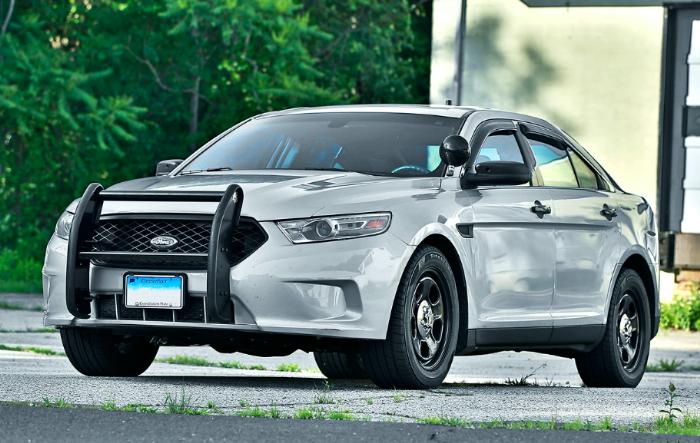
I know it’s a police car but hear me out. This is essentially an all-wheel-drive Ford Taurus SHO offering a 3.5L EcoBoost V6 making 365 hp or a 3.7L engine making 305 hp. Just avoid the 3.5L non-turbo (non-ecoboost) models that only made 288 hp. From its release in 2013 to its discontinuation in 2019, the 3.5L EcoBoost FPIS was ranked as the fastest police car in the U.S., with a 0-60 time of 5.7 seconds and a top speed of 150 mph. You’ll likely find more of these cars without the push bumpers than with them. If it has one you can remove it or hang some LED driving lights off of it for a Cannonball racer look. You can also remove the spotlight to get rid of the cop car look. Finding a former detective / undercover / supervisors’ car will have less of a police car look. Police cars owned by State Police / Highway Patrol will likely be better taken care of. These agencies are good about maintaining their cars and keeping them looking nice, and typically assign cars to an individual officer for the duration of the cars service. Some Sheriff’s departments assign cars to individual deputies as well. Police departments usually assign cars on a day-to-day basis and those cars are generally abused.
For the 2013 model year, Ford introduced the Taurus-based Ford Police Interceptor Sedan (FPIS). Initially, the FPIS was offered with a standard 3.5L naturally aspirated V6 with front- or all-wheel drive that made 288 hp and 254 lb⋅ft of torque, as well an optional 3.5L EcoBoost V6 with all-wheel drive borrowed from the SHO, producing 365 hp. The EcoBoost version of the FPIS had several features that were shared with the Taurus SHO Performance Package and not available with the other engine choices such as its SHO Performance Package-calibrated electronic power steering system, and 3.16 final drive ratio.
Shortly after the FPIS’s release, a naturally aspirated 3.7L engine taken from the Ford Mustang (in transverse arrangement) was added to the lineup, replacing the naturally aspirated 3.5 L V6 as the standard engine. However, the naturally aspirated 3.5L remained available as a cost-saving option. The new 3.7L V6 was not available on the civilian Ford Taurus. Its 3.72L aluminum block V6 engine weighed 40 lb (18 kg) less than the previous version. It produced 305 hp and 279 lb⋅ft of torque. All available engines came standard with a six-speed automatic transmission, and all-wheel drive. Front-wheel drive was an available cost-saving option for the naturally aspirated 3.5 L V6 version.
The entire FPIS line was equipped with a long list of standard features tailored to law-enforcement and severe-duty use, such as 75 mph (121 km/h) rear-impact protection; a police calibrated ECM for high performance driving and long idling; a heavy-duty cooling system that included an enlarged radiator, an engine oil cooler, transmission cooler, power transfer unit (PTU) cooler, and police-calibrated radiator fan settings; a 220-ampere alternator; heavy-duty 13-inch (330 mm) brake rotors with special ventilation and 18-inch (460 mm) five-spoke steel wheels; a police-tuned suspension with upsized sway bars and premium wheel hubs; steel deflector plates along the underbody; reinforced frame points; reinforced front door hinges with large tethers, and a specially tuned electronic stability control system set up for emergency-style driving.
2007-2015 Infiniti G37

The 2007-2008 Infinity G35 sedan came with a 3.5L VQ35HR V6 making 306 hp.
The 2009-2014 Infinity G37 sedan came with a 3.7L VQ37VHR V6 making 328 hp. (The G37 replaced the G35 in 2009)
The 2008-2015 Infinity G37 coupe came with 3.7L VQ37VHR V6 making 330 hp.
The 2010-2015 Infinity IPL G37 coupe was powered by a 3.7L VQ37VHR V6 making 348 hp.
Transmission options were a 6-speed manual, a 5-speed automatic (2007-2008 sedan, 2008 coupe) or a 7-speed automatic (all models, 2009-2015).
1997-2003 Jaguar XJR
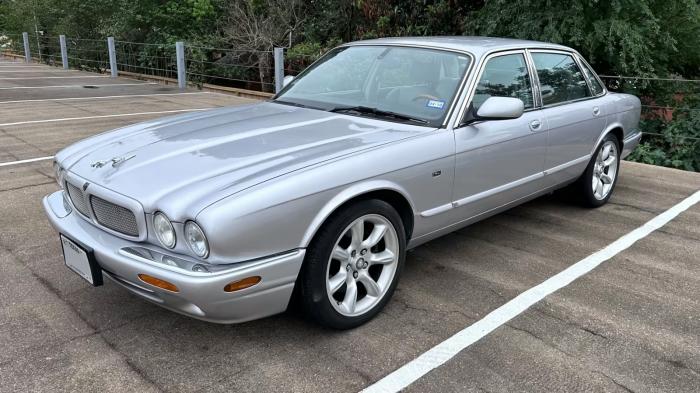
The 1997-2003 Jaguar XJR is powered by the supercharged version of the 4.0L V8 making 370 hp. It is also equipped with sport suspension, wider wheels and tires, and chrome window frames and rain gutters. Like the Sport model, the XJR has a body-colored radiator grille surround; it is with a stainless-steel mesh insert rather than the normal vanes. Other exterior touches include the XJR rear badging and larger exhaust outlets.
Available on late XJR models was an R1 performance option. This included 18-inches BBS wheels, larger Brembo brakes with cross-drilled rotors, and re-tuned suspension. The XJR was capable of reaching 60 mph from a standstill in 5.6 seconds, with an electronically limited top speed of 155 mph.
2004-2010 Jaguar XJ8 / XJR

The 2004-2010 Jaguar XJR is powered by a supercharged 4.2L V8 which produced 395 hp. The 2004-2010 Jaguar XJ8 is powered by a (non-supercharged) 4.2L V8 that produces 296 horsepower. That’s pretty dang close to 300 hp. All engines were paired with a ZF six-speed automatic transmission.
The top speed of the XJR was electronically limited to 155 mph and the top speed of the XJ8 is limited to 121 mph.
The car was used by British prime ministers, including Tony Blair and Gordon Brown. Previous and successive versions of the XJ were also used by Margaret Thatcher, John Major, David Cameron, Theresa May, and Boris Johnson as their Prime Ministerial Car.
1998-2006 Jaguar XKR / 2002-2005 Jaguar XK8
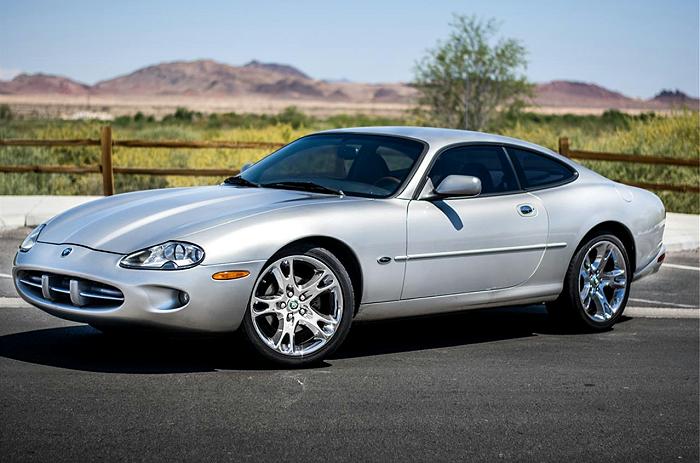
The 1998-2001 Jaguar XKR is powered by a supercharged 4.0L V8 which produces 370 hp.
The 2002-2005 Jaguar XK8 is powered by a 4.2L V8 which produces 300 hp.
The 2002-2005 Jaguar XKR is powered by supercharged 4.2L V8 which produces 400 hp.
The XKR, which was introduced in May 1998, used a supercharged variant of the V8 engine used in the XK8 which is also shared with the XJR albeit with a few air-to-water intercooler modifications and a two-piece drive shaft. The supercharger is a 1.8L Eaton unit shared with the Ford F-150 SVT Lightning pickup. The supercharger spins at 1.9 times the engine’s speed and has 11.9 pounds of boost pressure. Other visual differences from the XK8 include a small rear spoiler and hood louvres on the bonnet for improved engine airflow along with a meshed front grille.
Both the XK8 and XKR are electronically limited to a maximum speed of 250.1 km/h (155.4 mph). The XK8 came standard with 17-inch alloy wheels, while 18-inch (Standard on the XKR), 19-inch, and 20-inch wheels were available for additional cost. The XKR models used Pirelli P Zero tires measuring 245/45ZR-18 at the front and 255/ 45ZR-18 at the rear.
2010-2016 Lincoln MKS
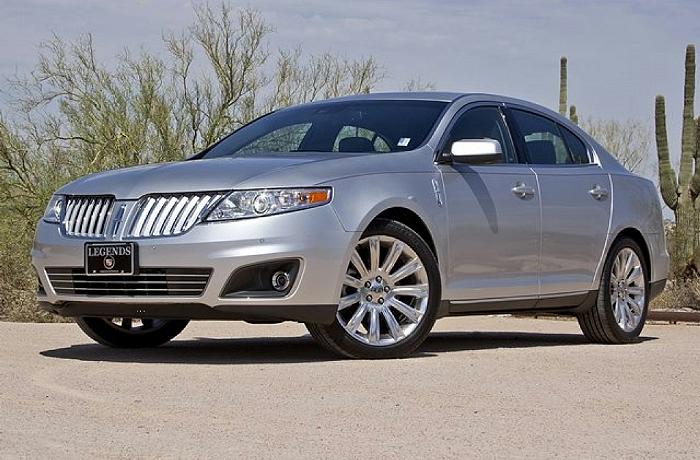
Lincoln offered the MKS from 2009-2016. Lincoln introduced the all-aluminum, twin-turbocharged, direct injection 3.5L Ecoboost DOHC V6, in the 2010 MKS which produces 355 hp. In 2013 the 3.5L Ecoboost was increased to 365 hp.
From 2013-2016 the Lincoln MKS was also offered with a 3.7L V6 engine which produced 304 hp.
2005-2008 Nissan 350Z
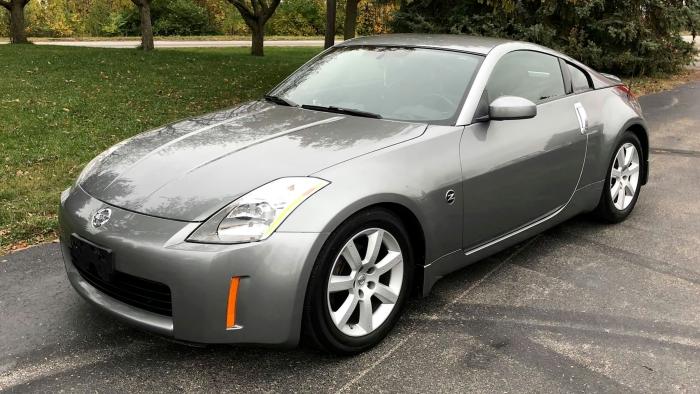
In 2005 Nissan launched the 35th Anniversary edition 350Z, with a revised exterior and interior. Early 2005 model-year 35th anniversary edition models were equipped with the original VQ35DE engine with 287 hp and an automatic transmission. In January 2005, Nissan introduced the 35th Anniversary 6-speed manual models and Track models (mid-year introduction), which included the updated VQ35DE 300 hp ‘Rev-up’ engine and new updated CD009 manual transmission as well as minor changes to suspension tuning and parts.
For the 2006 model year, the 350Z received changes for its mid-cycle facelift. The VQ35DE 300 hp ‘Rev-up’ engine that was introduced mid-year 2005 on the Track and 35th Anniversary Edition with 6-speed manual transmission models was offered for every trim level that had a manual transmission option. The VQ35DE rated at 287 hp continued to be offered with only the 5-speed automatic transmission.
For the 2007 model year, the 350Z was again moderately revised. The VQ35DE V6 was replaced with a new VQ35HR V6. It produces 306 hp at 6800 rpm. The VQ35HR had a raised redline to 7500 rpm and more torque across the rpm range. The hood was redesigned with a bulge reminiscent of the original 240Z to accommodate the raised deck height of the new VQ35HR.
2005-2008 Pontiac Grand Prix GXP
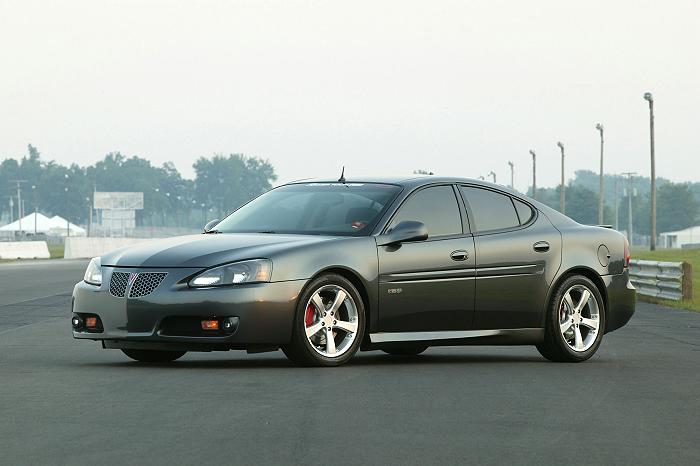
The 2005-2008 Pontiac Grand Prix GXP used the LS4 5.3L V8 which produces 303 hp. The engine used a shortened crankshaft, and a host of other modifications allowing it to fit the front-wheel-drive platform. The GXP also used a 4-speed automatic transmission with paddle-style TAPshift, heads-up display, vented cross drilled brakes with PBR calipers, performance tuned suspension with Bilstein gas-charged struts (sits about 9 mm (0.4 in) lower than other GP models), Magnasteer II, and StabiliTrak dynamic control system. Also, the DIC displayed G-Force (maximum achieved for lateral, acceleration, and deceleration) information when the car is not moving. Cosmetically, the GXP differed from the other models with revised bodywork including a different front clip, wheel well cooling vents on the front fenders, a different rear bumper, and twin-dual polished exhaust. The Grand Prix GXP also offer different-width 18-inch polished Alcoa forged aluminum wheels: the front wheels are 8-inches wide, and the rear wheels are 7-inches wide.
2004-2007 Volvo S60R
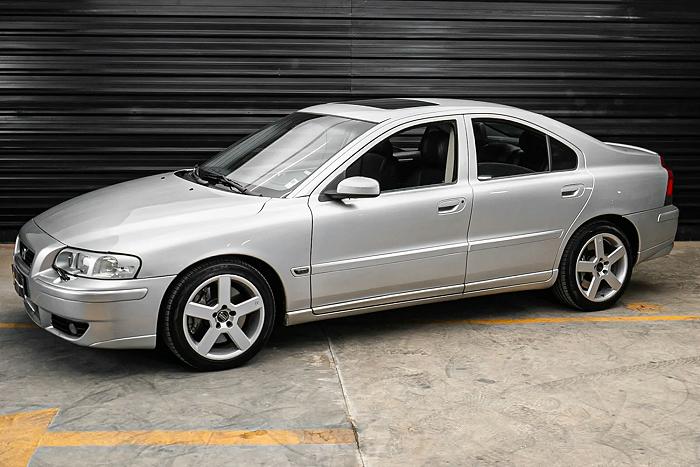
First introduced in 2004, Volvo’s S60 R 2.5L Inline 5-cylinder turbo used a Haldex computer controlled all-wheel-drive system mated to a 296 hp inline-5 which sends 95 percent of the torque to the front wheels under normal driving conditions and can send up to 70 percent to the rear wheels as necessary. The 2004-2005 models came with a 6-speed manual transmission, or an available 5-speed automatic which allowed only 258 lb⋅ft torque in 1st and 2nd gears. The 2006–2007 models came with a 6-speed manual or 6-speed automatic transmission (which was no longer torque-restricted). I know, it’s 4 hp shy of 300 hp, but it’s pretty man class and has all-wheel-drive.
Other aspects which set the R apart from standard S60s were the large Brembo front and rear four-piston brakes, 18-inch 5-spoke “Pegasus” wheels (available as an upgrade to the standard 17-inch wheels of the same design), blue faced “R” gauges, standard HID headlights, as well as the Four-C suspension system.
